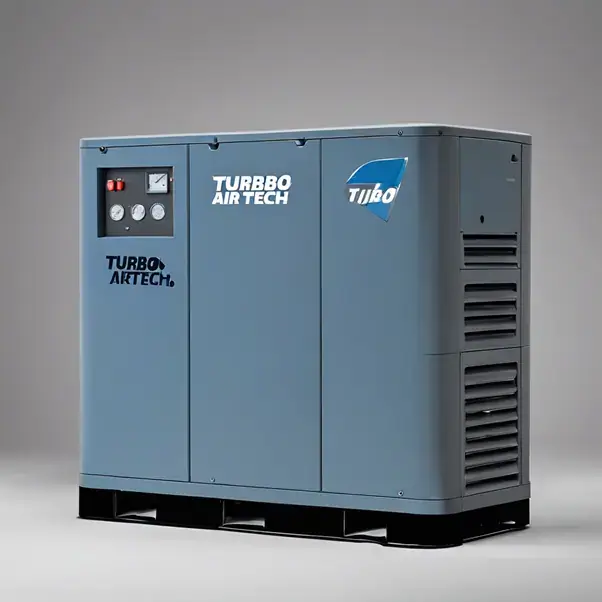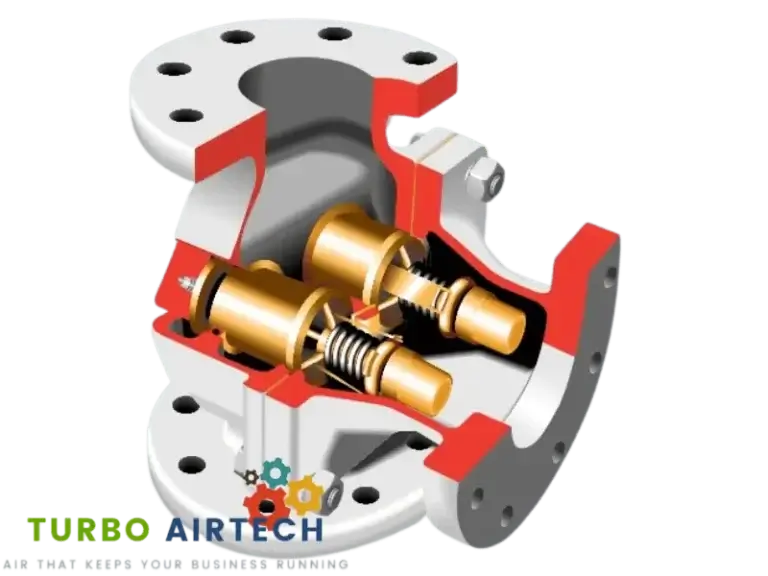
Introduction to thermostatic valves
Thermostatic valves play a crucial role in oil-injected screw compressors by regulating the flow of oil to the cooling jacket around the cylinder. This helps control the temperature of compressed air and prevents oil starvation, ensuring the proper functioning of the compressor.
In this article, we will explore the working of thermostat valves and the benefits they offer to compressor systems.

Thermostatic bypass valve
What are thermostatic valves, and why are they used?
A thermostatic valve is a device that controls the temperature of compressed air by regulating the oil flow to the cooling jacket around the rotating elements. It works by sensing the temperature of the compressed air and adjusting the oil flow accordingly. This helps to maintain a consistent temperature of the compressed air, which is crucial for the proper functioning of the compressor.
What does a thermostatic valve do?
A thermostatic valve operates using a self-acting temperature-sensitive element that expands or contracts based on the temperature changes of the compressed air (heating system). When the temperature of the compressed air rises, the temperature-sensitive element expands, opening the valve to allow more oil to flow to the cooling jacket.
Conversely, when the temperature of the compressed air drops, the temperature-sensitive element (sensor) contracts, reducing the oil flow to the cooling jacket. These valves are also known as temperature regulating valves (trv) or thermostatic radiator valves due to their principle of working.
Benefits of Using a Thermostatic Valve
There are several benefits to using a thermostatic valve in an oil-injected screw compressor system. Some of the key benefits include:
- Maintains Consistent Air Temperature:
- A thermostatic valve helps to maintain a consistent temperature of the compressed air, which is essential for the proper functioning of the compressor.
- Protects Against Oil Starvation:
- By regulating the oil flow to the cooling jacket, a thermostatic valve helps to prevent oil starvation, which can cause damage to the compressor.
- Increases Compressor Efficiency:
- By maintaining a consistent temperature of the compressed air, a thermostatic valve helps to increase the efficiency of the compressor, leading to lower energy costs.
- Improves Compressor Longevity:
- By preventing oil starvation, a thermostatic valve helps to improve the longevity of the compressor, reducing the need for repairs and maintenance.
Types of Thermostatic Valves
There are several different types of thermostatic valves available on the market, each designed to meet specific requirements. Some of the most common types include:
Piston Type:
A piston-type thermostatic valve uses a piston to control the oil flow to the cooling jacket. The piston is connected to a temperature-sensitive element that expands or contracts based on the temperature of the compressed air.
Poppet Type:
A poppet-type thermostatic valve uses a spring-loaded poppet to control the oil flow to the cooling jacket. The poppet is connected to a temperature-sensitive element that expands or contracts based on the temperature of the compressed air.
Bellows Type:
A bellows-type thermostatic valve uses a bellows to control the oil flow to the cooling jacket. The bellows is connected to a temperature-sensitive element that expands or contracts based on the temperature of the compressed air.
Installation Methods for thermostatic radiator valve
There are several ways of installing thermostatic valves, but the two most common applications are “mixing” and “diverting”. When diverting the fluid, the temperature into the valve is controlled. When mixing the fluid, the temperature of the valve is controlled. In mixing mode, the valve may run at 1-2˚C (1.8-3.6˚F) higher than the normal set temperature.
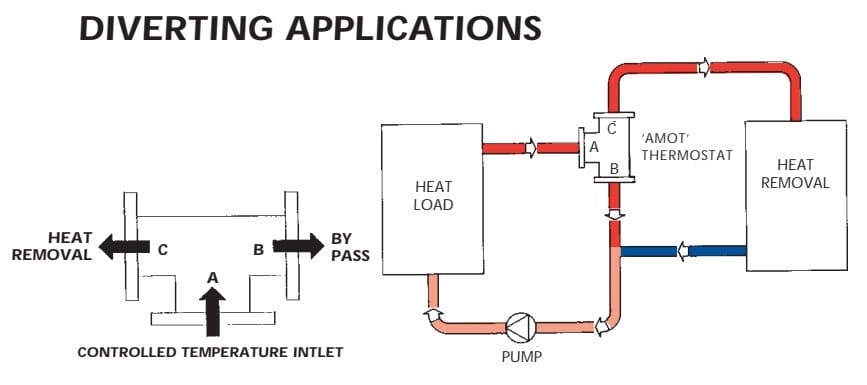
Diverting application
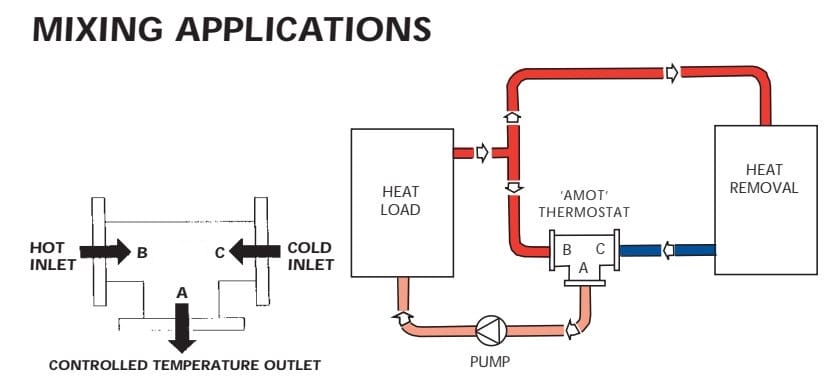
Mixing application
Thermostatic Valve Selection Flow Chart
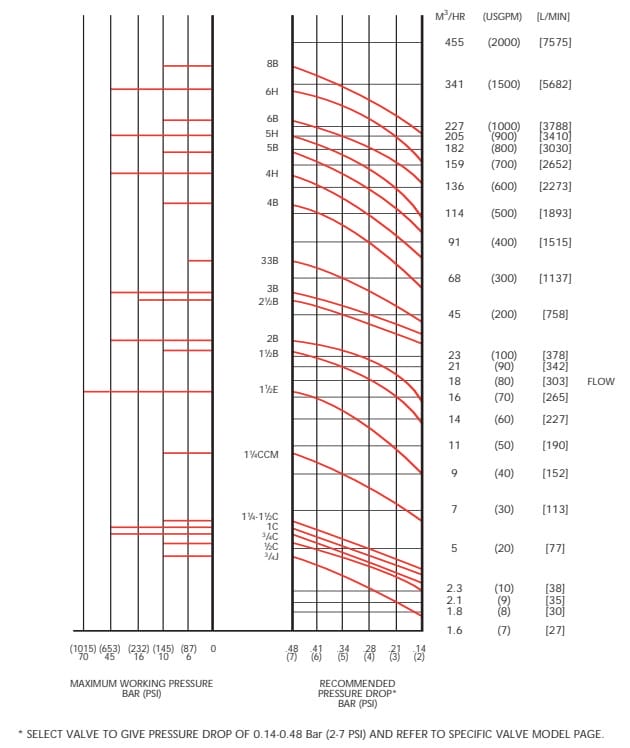
Thermostatic valve selection chart
Valve Sizing for thermostatic radiator valves
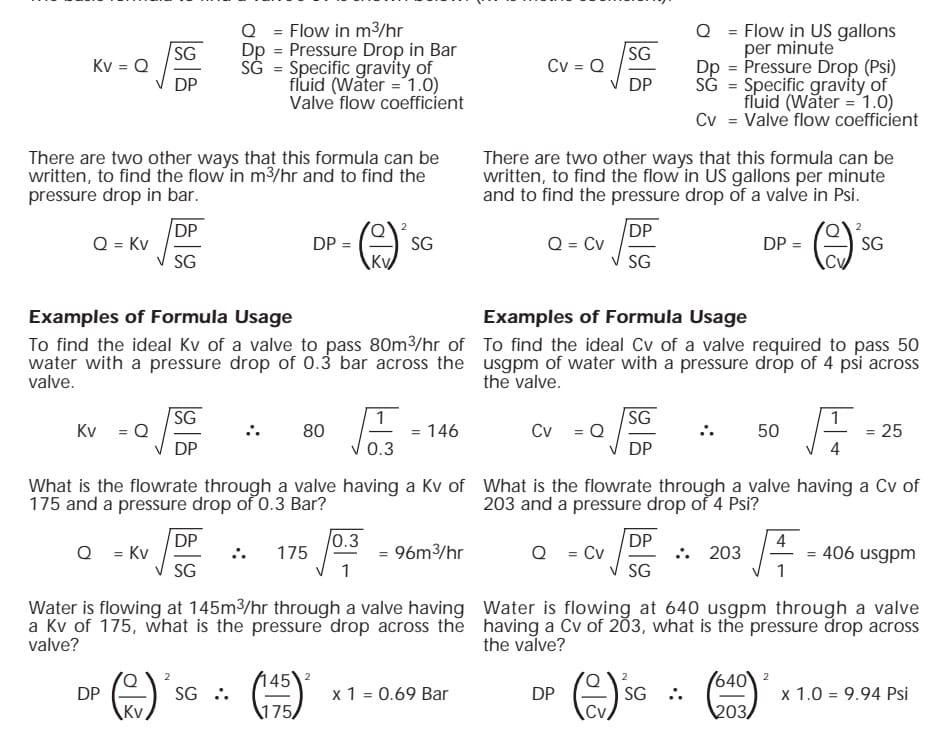
Thermostatic valve sizing
Pressure Drop at the highest setting
The normal recommendation for sizing Thermostatic valves is to select a pressure drop between 0.14 to 0.5 bar (2 and 7 Psi).
Valve Flow Coefficient for flow of water
A Cv represents the flow coefficient of the valve (Cv). It is defined as the number of US gallons per minute of room temperature water which will flow through the valve with a pressure drop of 1 Psi across the valve. The basic formula to find a valve’s Cv is shown below. (Kv is a metric coefficient).
Viscosity Correction for thermostatic valve head
For the selection of valves for use with more viscous fluids than water, the following must be calculated in addition to using the previously mentioned formulas.
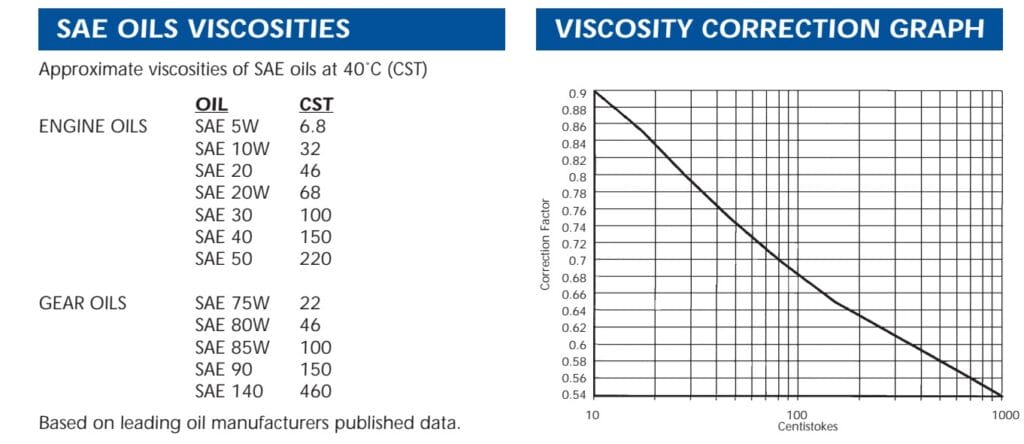
Viscosity correction in Thermostatic valve
Viscosity:
Find the viscosity of the fluid which will be used in the valve. This will generally be in centistokes – ISO grade oil is easy to calculate as the grade no. is the viscosity, i.e. ISO VG 46 = 46 centistokes at 40˚C.
Viscosity Correction:
Once the viscosity value has been found, by using the graph below, the Flow Coefficient correction factor can be established. The correction value that is produced by the graph should then be multiplied by the original Flow Coefficient.
This gives the corrected Flow Coefficient, which can then be used in the standard formulas.Example: 100 CST = correction factor of 0.680.68 x Flow Coefficient = corrected Flow Coefficient (Kv or Cv)
Troubleshooting
If the cooling system does not operate close to the desired temperature, the following guide may help to identify or locate the problem.System temperature too cold
- Insufficient heat is transferred to the coolant to maintain temperature.
- The wrong nominal element sensor temperature was selected.
- The thermoplastic valve greatly oversize the cooling capacity of the system much greater than required.
- The thermostatic valve is installed backwards, thus sending water to cooler at low temperatures.
- Worn or leaking O-rings allow leakage to cooler.
- Excessive pressure drops across the valve.
- Foreign matter preventing closure of elements.
- Bi-metallic type thermometers will indicate low if calibrated in oil, then in hot water.
System temperature too hot
- The cooling capacity of the system is inadequate due to temperature rise.
- The thermoplastic valve body is too small for the flow rate, causing high pressure drops and possible cavitation problems.
- Valve is installed backwards, reducing flow to cooler as temperature increases.
- By-pass will not close due to worn or pitted seats, sticking valve, sliding valve, seals, worn valve piston etc.
- Elements may have suffered sufficient over-temperature to prevent full movement, thus preventing full cooling.
- Solids build up on the element sliding valve preventing correct operation.
- Foreign matter stuck between the sliding valve and the seat.
HYSTERESIS in a Thermostatic Valve
The gap found between the upstroke and downstroke curves is the element hysteresis. The hysteresis is caused by element temperature delay and by the friction of parts in motion affecting temperature control.
Conclusion
Thermostatic valves play a crucial role in oil-injected screw compressors, helping to regulate the flow of oil to the cooling jacket and control the temperature of compressed air.
By preventing oil starvation, increasing compressor efficiency, and improving compressor longevity, thermostatic valves are a key component in ensuring the proper functioning of the compressor system.


